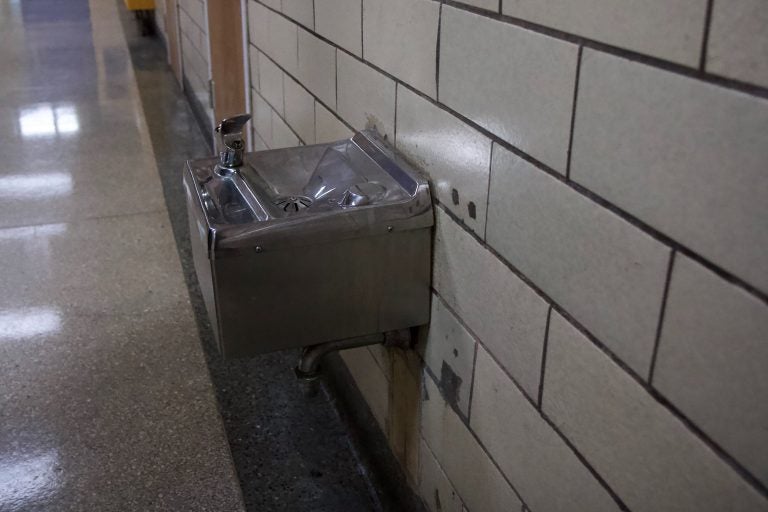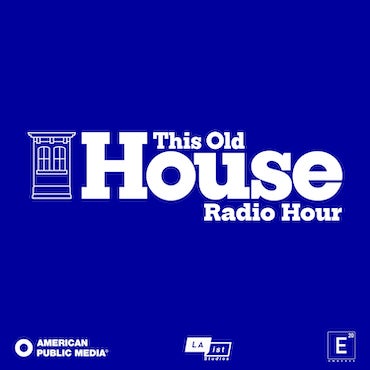Report: Many Pennsylvania school districts fail to address environmental hazards
Schools in southeastern Pennsylvania fail short on testing and remediating mold and lead.
Listen 1:02
File photo: Water fountains at a Philadelphia charter school in 2019 are turned off because of lead in the plumbing. (Kimberly Paynter/WHYY)
From Philly and the Pa. suburbs to South Jersey and Delaware, what would you like WHYY News to cover? Let us know!
Schools across Pennsylvania have detected environmental hazards in their buildings — from mold to lead contamination — but fewer than half have taken steps to remediate the concerns, according to a new report.
Between 2021 and 2022, more than 71% of school districts included in the report detected lead in their drinking water, according to Women for a Healthy Environment. During that same period, almost half of the school districts that tested for mold detected the fungus in at least one of their buildings, according to the group of environmental health professionals and advocates.
“What we’ve discovered should concern every parent, educator and policymaker,” said Michelle Naccarati-Chapkis, executive director of Women for a Healthy Environment. “Our children and educators spend countless hours in school buildings that should promote health and growth, but for too many, they’re not.”
Women for a Healthy Environment collected information through Right-to-Know requests from 80 Pennsylvania public school districts. The organization did not provide the names of the schools that reported various environmental hazards.
A spokesperson for the Pennsylvania Department of Education said the agency is reviewing the report.
Respiratory irritants lurking in schools
Mold was a prevalent problem among school districts in southeastern Pennsylvania, and fewer than half of school districts that detected mold in their buildings remediated the issue, according to the report.
In addition, fewer than half of school districts in the region report testing for mold at all. There are state regulations to do so, and schools typically look for mold only after receiving a complaint, Naccarati-Chapkis said.
Mold can irritate respiratory problems such as asthma — rates of which in Pennsylvania are higher than the national average.
Schools in this region also upgrade their heating, ventilation and air conditioning systems at slower rates. That leaves kids more susceptible to health problems because of inadequate air flow that can cause pollutants to remain stagnant. Some schools, including in Philadelphia, haven’t installed HVAC systems at all, forcing schools to close during extreme heat.
“As a physician who spent decades treating children with asthma as well as environmental illness, the findings in this report represent a public health crisis hiding right in plain sight,” said Dr. Deborah Gentile, medical director at Community Partners in Asthma Care. “Children have unique vulnerabilities. They breathe more air per pound of body weight than adults. Their developing organ systems are more susceptible to environmental toxins.”
The report also noted additional irritants used regularly on school properties, such as pesticides, which are linked to chronic health conditions, and chemical cleaning products, which can cause respiratory problems.
Failing to test for lead
Fewer than a quarter of school districts in southeastern Pennsylvania tested for lead in drinking water supplies. State law encourages, but does not require, schools to test drinking water annually. A 2024 report found loopholes in Pennsylvania state law that allow some school districts in the state to avoid testing their drinking water for lead, and to abstain from informing parents and teachers about lead contamination.
Exposure to the neurotoxin can cause serious health problems, including organ damage and cognitive impairment among children.
Women for a Healthy Environment is urging schools to invest in systems that filter harmful chemicals prior to detection.
The report also finds that 14% of schools in southeastern Pennsylvania tested for lead paint. Of those that detected the toxin, only one could provide documentation proving it had been remediated.
Federal law does not require routine, periodic testing for lead in paint and dust in schools, and the state only requires lead paint testing in schools that serve children under 6.
In 2021, nearly 5,000 children in the state tested positive for high levels of lead in their blood. Lead paint is the top source of exposure in the state, according to the Pennsylvania Department of Health.
Since taking office, the Shapiro administration has allocated $275 million for school infrastructure improvements to address environmental hazards.
In 2024, the Pennsylvania Department of Education announced up to $7.9 million in grants from the Public School Environmental Repairs Grant Program to help remediate lead, mold, asbestos and other environmental hazards.
The governor’s 2025-26 budget proposal includes $125 million for school facility improvement projects.
“Governor Shapiro is committed to continuing these vital investments, ensuring every student in Pennsylvania has the opportunity to thrive in safe and healthy learning environments,” a DOE spokesperson said in an email.
The Women for a Healthy Environment report makes several recommendations, such as upgrading ventilation and filtration for improved air quality, implementing policies for mold remediation, requiring all schools to filter their drinking water and reducing pesticide use.
The report makes several recommendations, such as upgrading ventilation and filtration for improved air quality, implementing policies for mold remediation, requiring all schools to filter their drinking water and reducing pesticide use.
“Every child deserves an environment free of environmental hazards, one that promotes clean air, clean water and no exposure to any harmful chemicals regardless of the zip code, regardless of income,” Naccarati-Chapkis said. “Our findings really highlighted the urgent need for stronger regulations and policies both at the school board level and the state level.”

Get daily updates from WHYY News!
WHYY is your source for fact-based, in-depth journalism and information. As a nonprofit organization, we rely on financial support from readers like you. Please give today.







